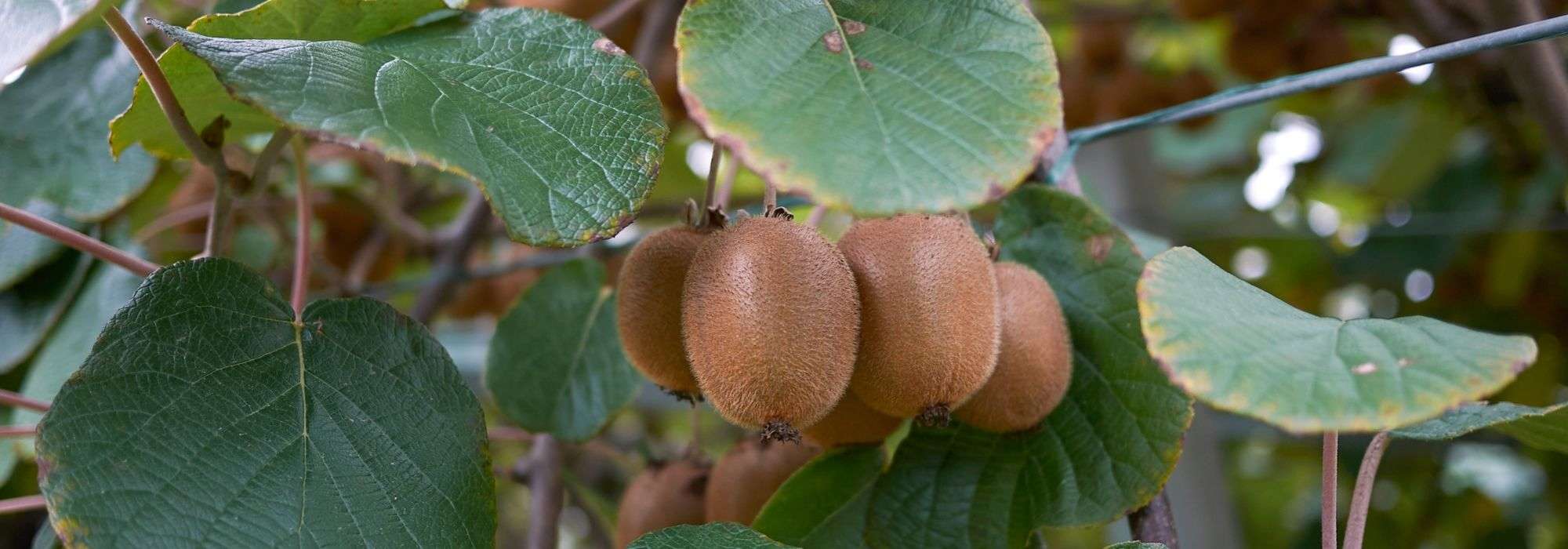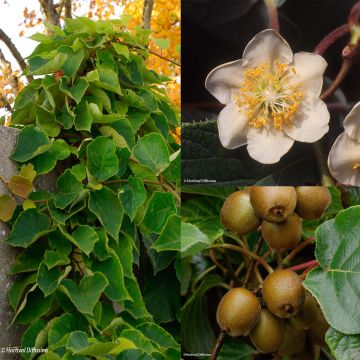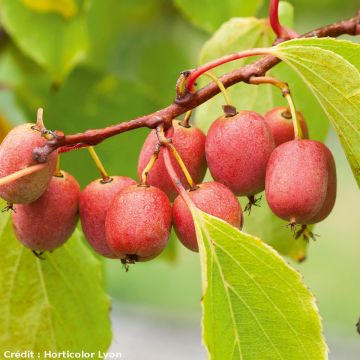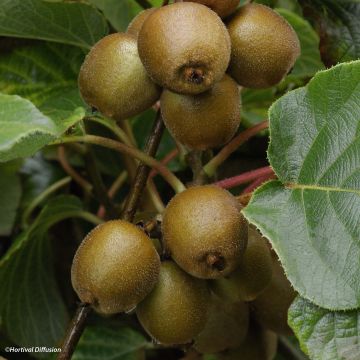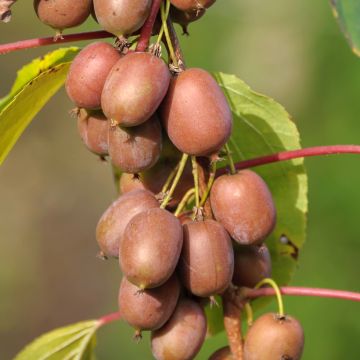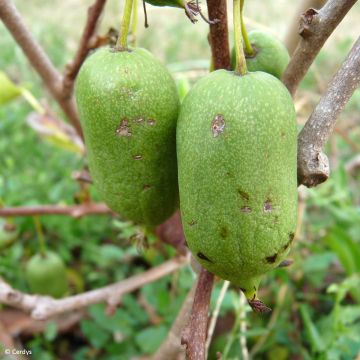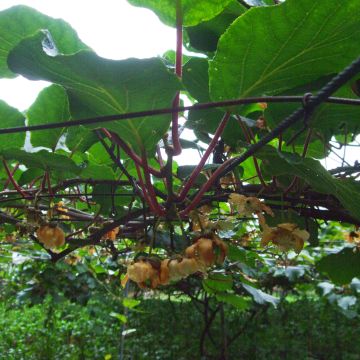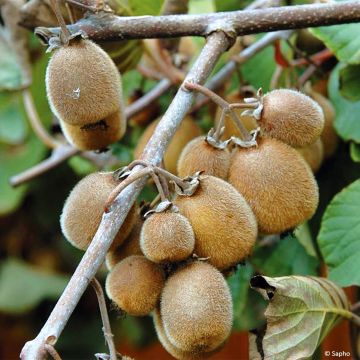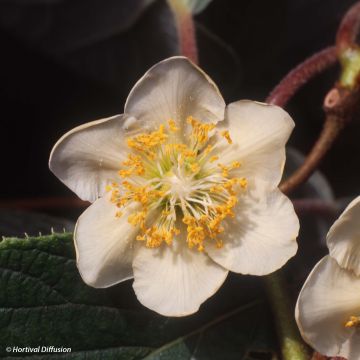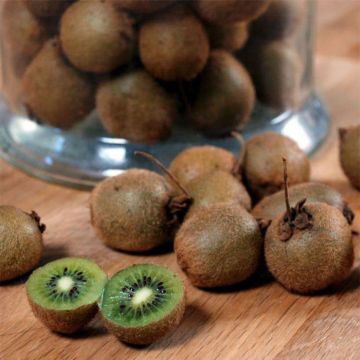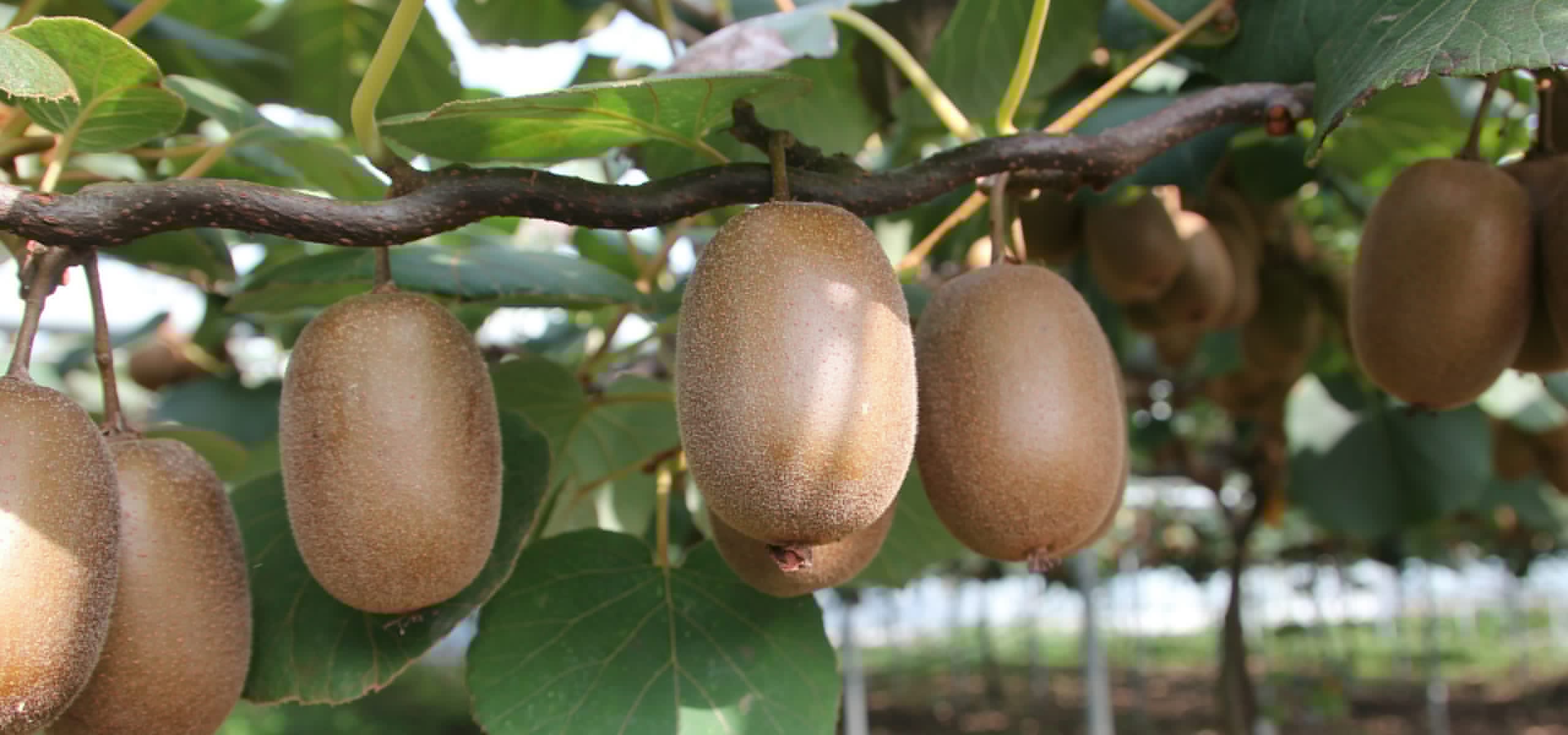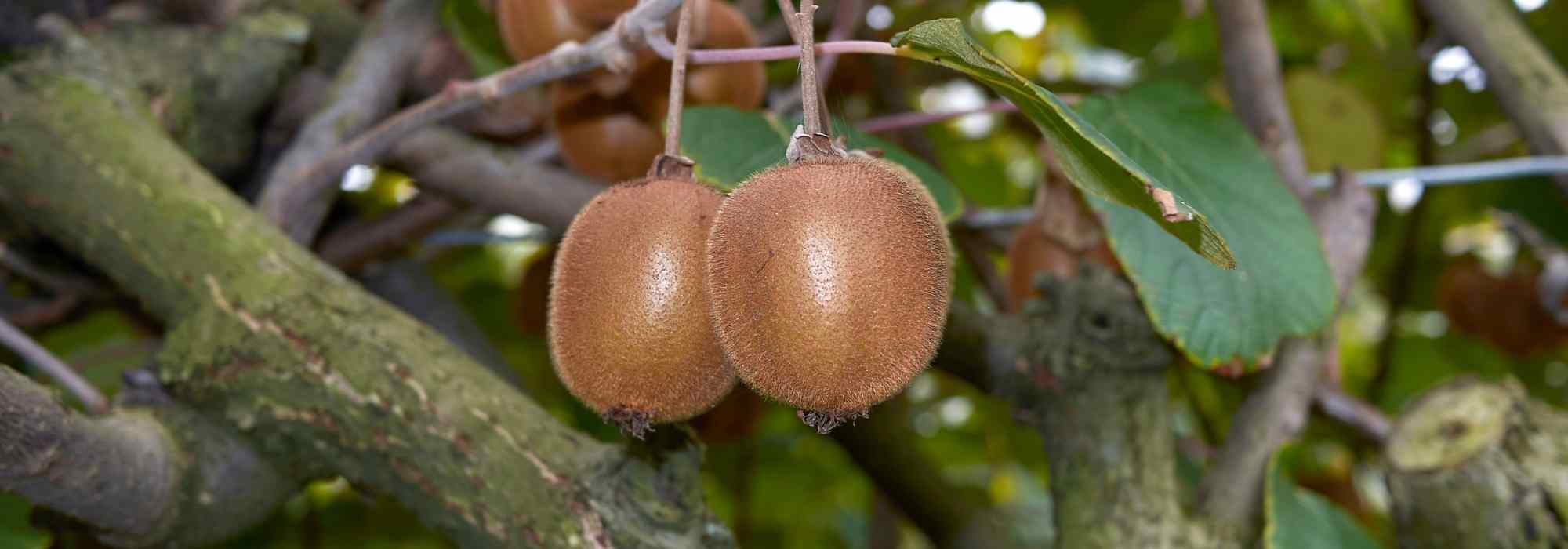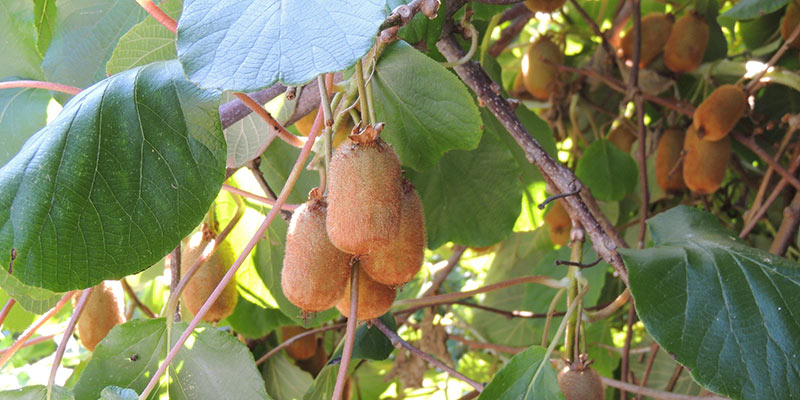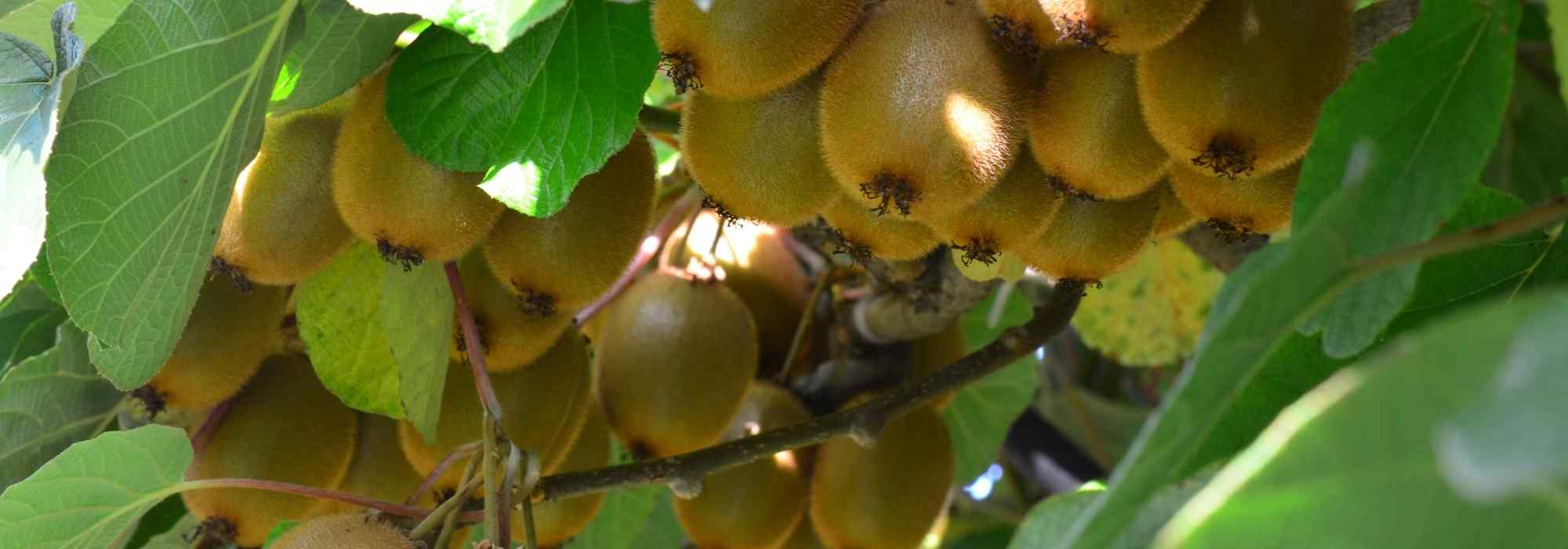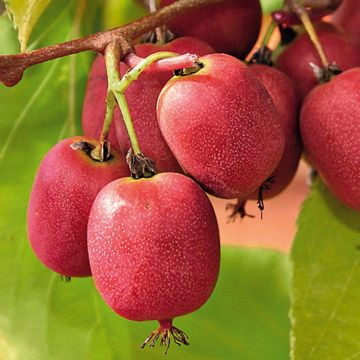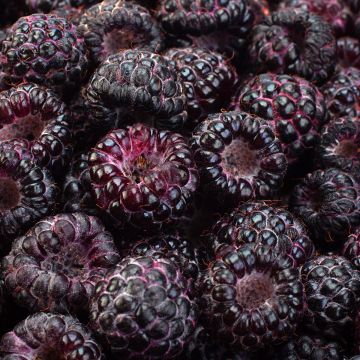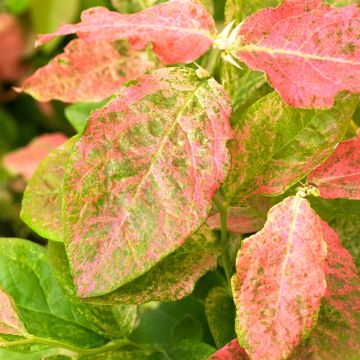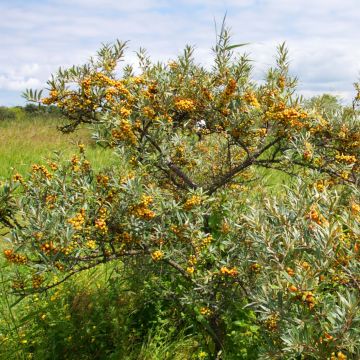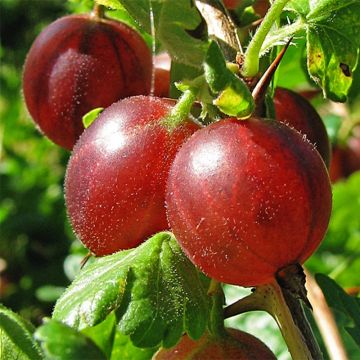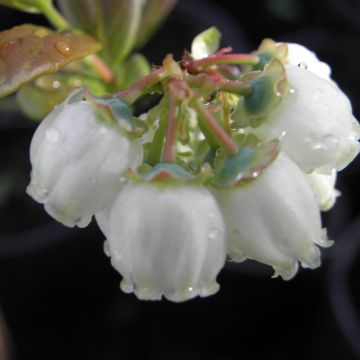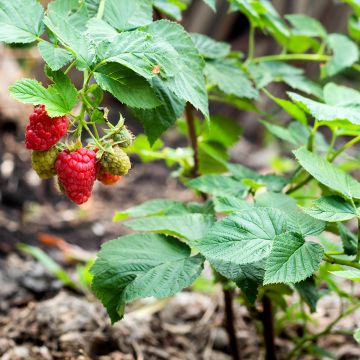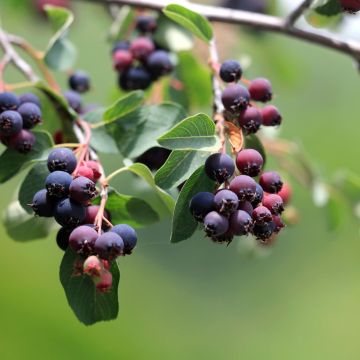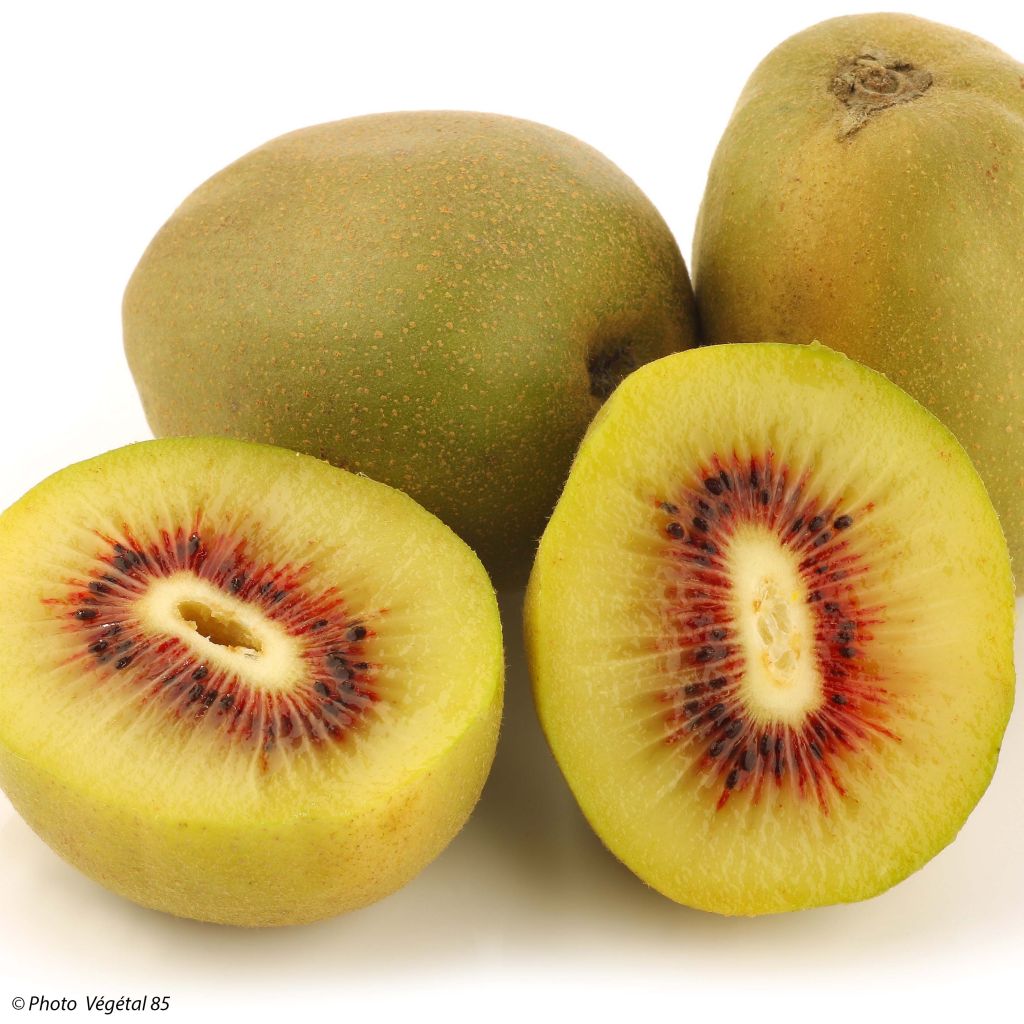

Kiwi - Actinidia deliciosa Wonder
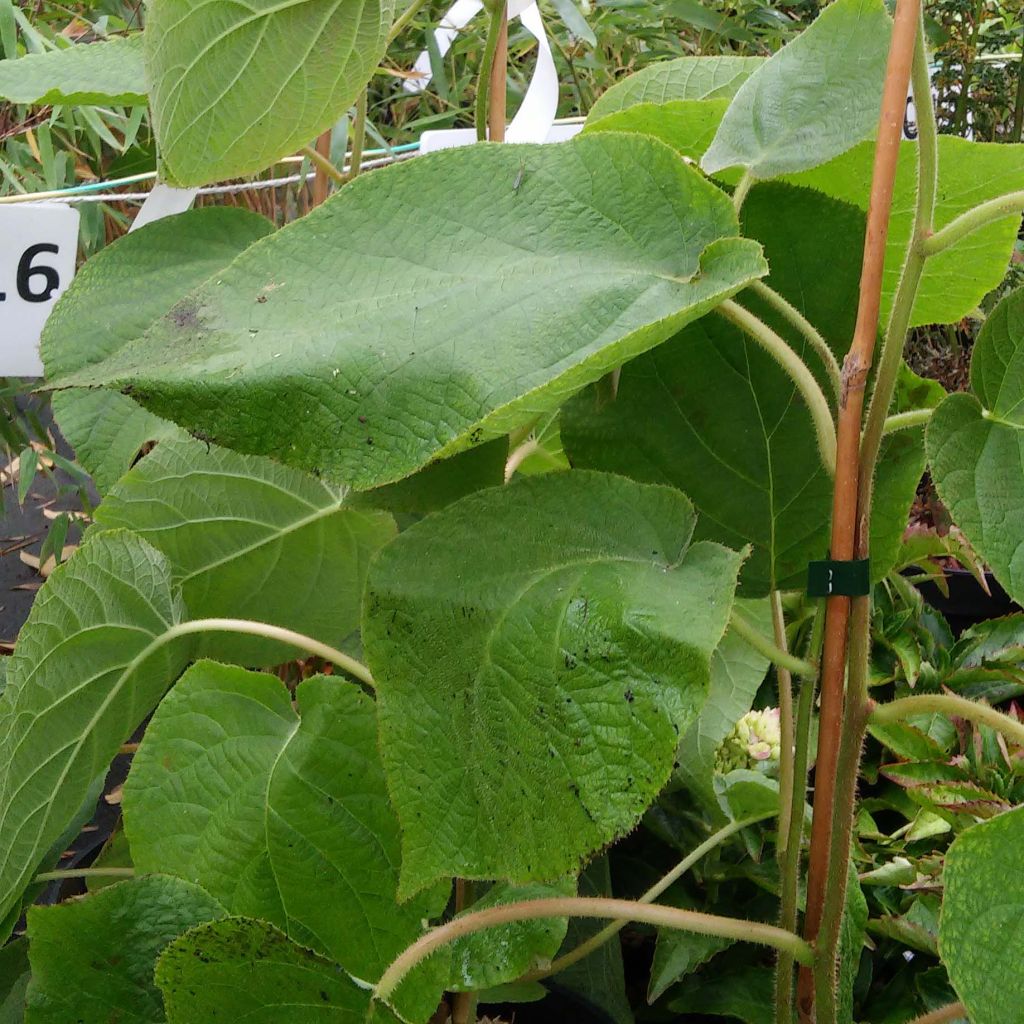

Kiwi - Actinidia deliciosa Wonder
Yellow Kiwi Plant Kiwi Wonder (female) - Actinidia deliciosa
Actinidia deliciosa Kiwi Wonder®
Chinese Gooseberry, Kiwi Fruit, Kiwi
Hello. Kiwis arrived in very bad condition. The cardboard box was mishandled. Inside, only the two pots were crushed against each other. There was no bubble wrap or anything else. There was a slug that had a feast. The label indicated 60/100, I think in centimeters, but in reality, it measures 20 centimeters, so they should have been 3/4 litre pots; it feels more like 1 litre pots. All this to say that I spent 60€.
Karl , 30/04/2024
Special offer!
Receive a €20 voucher for any order over €90 (excluding delivery costs, credit notes, and plastic-free options)!
1- Add your favorite plants to your cart.
2- Once you have reached €90, confirm your order (you can even choose the delivery date!).
3- As soon as your order is shipped, you will receive an email containing your voucher code, valid for 3 months (90 days).
Your voucher is unique and can only be used once, for any order with a minimum value of €20, excluding delivery costs.
Can be combined with other current offers, non-divisible and non-refundable.
Home or relay delivery (depending on size and destination)
Schedule delivery date,
and select date in basket
This plant carries a 6 months recovery warranty
More information
We guarantee the quality of our plants for a full growing cycle, and will replace at our expense any plant that fails to recover under normal climatic and planting conditions.
Description
The Kiwi (Actinidia deliciosa) Kiwi Wonder® or Red Kiwi is an original variety that produces yellow fruits with yellow flesh and a red heart, with a very sweet and non-acidic flavor. Their skin is thin and smooth. This female variety requires the proximity of a male plant to bear fruit, such as the male cultivar Tomuri. This attractive climber can be trained along a pergola or trellis. Plant ideally in autumn or any time of year without frost, for a harvest around mid-September to late October, starting from the 4th or 5th year.
The Kiwi (Actinidia chinensis or deliciosa), also known as Chinese gooseberry, yang tao, or plant mouse, is the fruit of the Actinidia plant. It belongs to the Actinidiaceae family, just like its cousin the Kiwi (Actinidia arguta). Originally from China, the kiwi is a vigorous climbing vine that can grow up to 3m (10ft) per year under favorable conditions. This climbing plant should be trained on a sturdy support, such as a wall with strong wires, a trellis, a pergola, a tree trunk, or a fence. It can reach a height of 5m (16ft) and a width of 10m (33ft) and requires pruning to control its growth.
Some varieties are self-fertile (male and female flowers on the same plant) and can be planted alone. Other varieties bear either male or female flowers and require the presence of a plant of the opposite sex for pollination. One male plant can pollinate approximately 5 to 6 female plants. Only the female plants produce fruit. The Wonder® cultivar only bears female flowers.
The Kiwi Wonder® is hardy down to -15°C but is sensitive to late frosts, as the buds freeze at -5°C. Its foliage is deciduous. The climbing stems bear large, smooth, ovate, dark green leaves on the upper side and lighter underneath, covered with small red hairs, just like the stems. From the third or fourth year of cultivation, clusters of fragrant flowers appear in May-June on the previous year's branches. These are white-cream flowers with broad petals, about 4cm (2in) wide. The female flowers have white stigmas.
The flowering is followed by the formation of large, fleshy, ovoid berries weighing approximately 45 grams. The thin skin is light brown and hairy for varieties derived from Actinidia delociosa. The flesh is green, juicy, slightly sweet but deliciously tangy, and contains numerous small black seeds. Kiwi is rich in vitamin C, fiber, and minerals such as potassium, magnesium, and calcium. The harvest takes place around November, before the frosts. The fruits can be picked even when they are still green as they continue to ripen after harvesting. They can be stored well in a cool place at 5°C, in a cellar, for over a month. Kiwi is ripe when it is soft to the touch. Place kiwis next to apples or bananas to speed up their ripening. Once peeled, kiwi can be enjoyed on its own or mixed with other autumn fruits, made into jams, or used to decorate pies and certain savory dishes.
To save space, plant a male plant at the base of a pole or pylon: it will climb and elongate without taking up too much ground space.
Yellow Kiwi Plant Kiwi Wonder (female) - Actinidia deliciosa in pictures
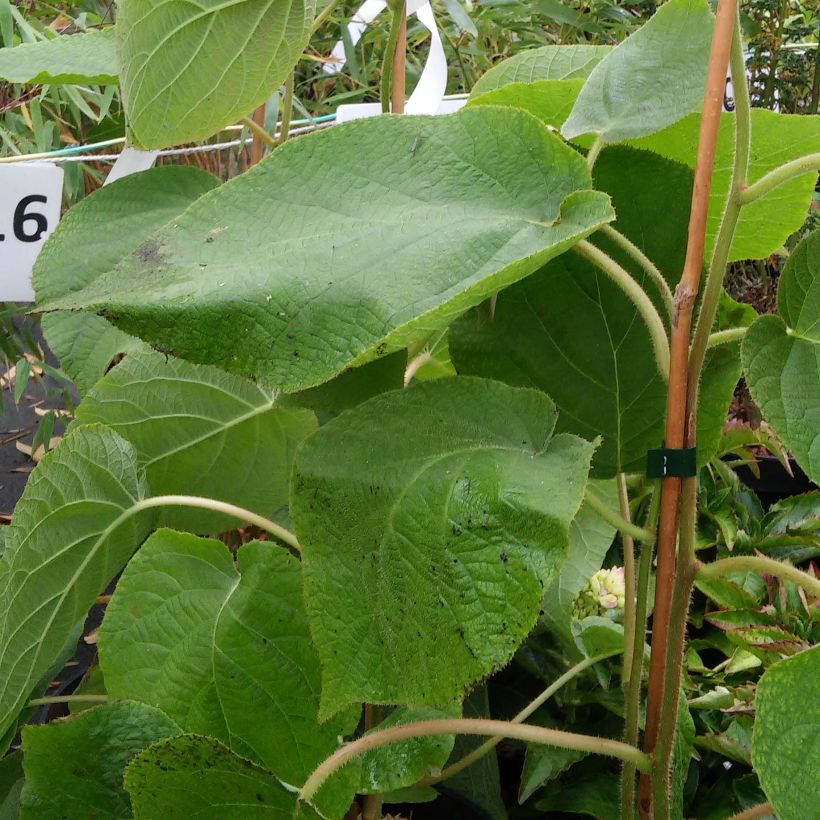

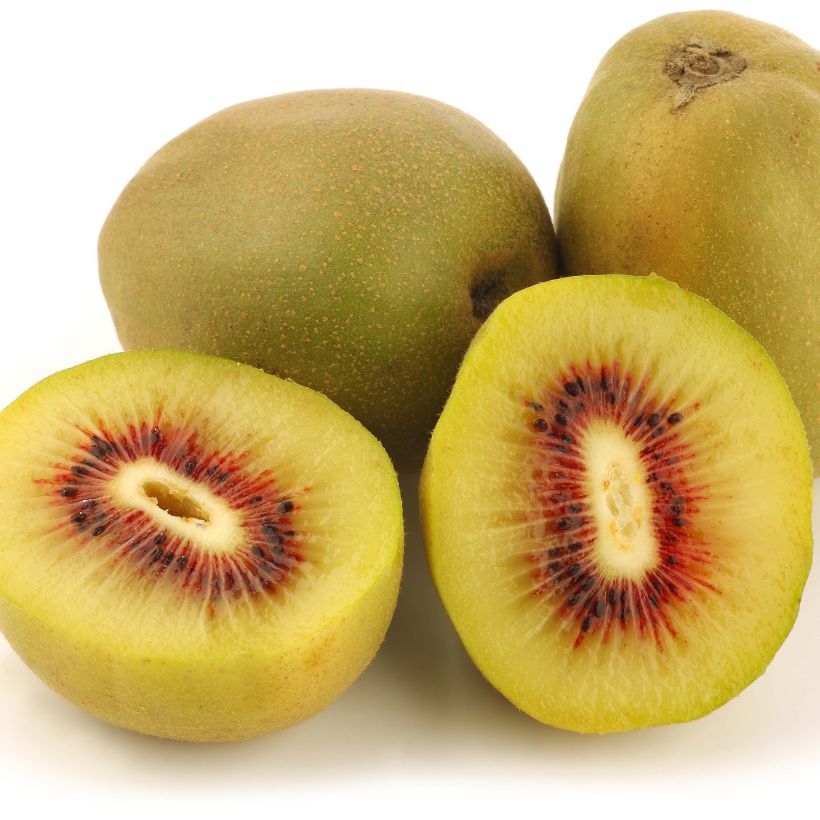

Plant habit
Fruit
Flowering
Foliage
Botanical data
Actinidia
deliciosa
Kiwi Wonder®
Actinidiaceae
Chinese Gooseberry, Kiwi Fruit, Kiwi
Cultivar or hybrid
Other Kiwi bush
View all →Planting and care
Planting Actinidia is preferably done in autumn, but can be done all year round outside of freezing periods.
Kiwi thrives in a cool, rich, light, and well-drained soil, preferably non-calcareous. The plant fears stagnant humidity. Install it in a sunny and sheltered location, protected from strong winds to spare its young shoots. Space the plants 3 to 4m (10 to 13ft) apart. Dig a hole 50 cm (20in) in all directions. Spread a layer of gravel at the bottom, then a layer of soil mixed with peat or compost. Place the root ball (the collar of the plant should be at ground level) and cover with soil. Compact and water generously. Provide a sturdy support to help its voluble branches climb. Kiwi has trailing roots that develop horizontally under the surface of the soil, requiring only light surface hoeing if necessary. Mulch the plants for the first three winters.
Kiwi requires little maintenance, simply provide regular watering. In periods of high heat, water it 1 to 2 times a week. Once established and rooted, the plant can fend for itself and becomes less water-hungry. In late winter, bury some well-decomposed organic fertilizer or compost at the base of the plant by lightly hoeing. Train the stems as they grow by tying them loosely to the support. They will wrap around it.
Pruning: every year, in March, prune the previous year's branches to 3 or 4 buds. In summer, if necessary, shorten overly bulky branches.
Not very susceptible to insects and pests, Kiwi can nevertheless be affected by red spiders in a hot and dry environment. To eliminate them, lightly mist the foliage and soil regularly.
Planting period
Intended location
Care
Planting & care advice
-
, onOrder confirmed
Reply from on Promesse de fleurs
Similar products
Haven't found what you were looking for?
Hardiness is the lowest winter temperature a plant can endure without suffering serious damage or even dying. However, hardiness is affected by location (a sheltered area, such as a patio), protection (winter cover) and soil type (hardiness is improved by well-drained soil).

Photo Sharing Terms & Conditions
In order to encourage gardeners to interact and share their experiences, Promesse de fleurs offers various media enabling content to be uploaded onto its Site - in particular via the ‘Photo sharing’ module.
The User agrees to refrain from:
- Posting any content that is illegal, prejudicial, insulting, racist, inciteful to hatred, revisionist, contrary to public decency, that infringes on privacy or on the privacy rights of third parties, in particular the publicity rights of persons and goods, intellectual property rights, or the right to privacy.
- Submitting content on behalf of a third party;
- Impersonate the identity of a third party and/or publish any personal information about a third party;
In general, the User undertakes to refrain from any unethical behaviour.
All Content (in particular text, comments, files, images, photos, videos, creative works, etc.), which may be subject to property or intellectual property rights, image or other private rights, shall remain the property of the User, subject to the limited rights granted by the terms of the licence granted by Promesse de fleurs as stated below. Users are at liberty to publish or not to publish such Content on the Site, notably via the ‘Photo Sharing’ facility, and accept that this Content shall be made public and freely accessible, notably on the Internet.
Users further acknowledge, undertake to have ,and guarantee that they hold all necessary rights and permissions to publish such material on the Site, in particular with regard to the legislation in force pertaining to any privacy, property, intellectual property, image, or contractual rights, or rights of any other nature. By publishing such Content on the Site, Users acknowledge accepting full liability as publishers of the Content within the meaning of the law, and grant Promesse de fleurs, free of charge, an inclusive, worldwide licence for the said Content for the entire duration of its publication, including all reproduction, representation, up/downloading, displaying, performing, transmission, and storage rights.
Users also grant permission for their name to be linked to the Content and accept that this link may not always be made available.
By engaging in posting material, Users consent to their Content becoming automatically accessible on the Internet, in particular on other sites and/or blogs and/or web pages of the Promesse de fleurs site, including in particular social pages and the Promesse de fleurs catalogue.
Users may secure the removal of entrusted content free of charge by issuing a simple request via our contact form.
The flowering period indicated on our website applies to countries and regions located in USDA zone 8 (France, the United Kingdom, Ireland, the Netherlands, etc.)
It will vary according to where you live:
- In zones 9 to 10 (Italy, Spain, Greece, etc.), flowering will occur about 2 to 4 weeks earlier.
- In zones 6 to 7 (Germany, Poland, Slovenia, and lower mountainous regions), flowering will be delayed by 2 to 3 weeks.
- In zone 5 (Central Europe, Scandinavia), blooming will be delayed by 3 to 5 weeks.
In temperate climates, pruning of spring-flowering shrubs (forsythia, spireas, etc.) should be done just after flowering.
Pruning of summer-flowering shrubs (Indian Lilac, Perovskia, etc.) can be done in winter or spring.
In cold regions as well as with frost-sensitive plants, avoid pruning too early when severe frosts may still occur.
The planting period indicated on our website applies to countries and regions located in USDA zone 8 (France, United Kingdom, Ireland, Netherlands).
It will vary according to where you live:
- In Mediterranean zones (Marseille, Madrid, Milan, etc.), autumn and winter are the best planting periods.
- In continental zones (Strasbourg, Munich, Vienna, etc.), delay planting by 2 to 3 weeks in spring and bring it forward by 2 to 4 weeks in autumn.
- In mountainous regions (the Alps, Pyrenees, Carpathians, etc.), it is best to plant in late spring (May-June) or late summer (August-September).
The harvesting period indicated on our website applies to countries and regions in USDA zone 8 (France, England, Ireland, the Netherlands).
In colder areas (Scandinavia, Poland, Austria...) fruit and vegetable harvests are likely to be delayed by 3-4 weeks.
In warmer areas (Italy, Spain, Greece, etc.), harvesting will probably take place earlier, depending on weather conditions.
The sowing periods indicated on our website apply to countries and regions within USDA Zone 8 (France, UK, Ireland, Netherlands).
In colder areas (Scandinavia, Poland, Austria...), delay any outdoor sowing by 3-4 weeks, or sow under glass.
In warmer climes (Italy, Spain, Greece, etc.), bring outdoor sowing forward by a few weeks.






























